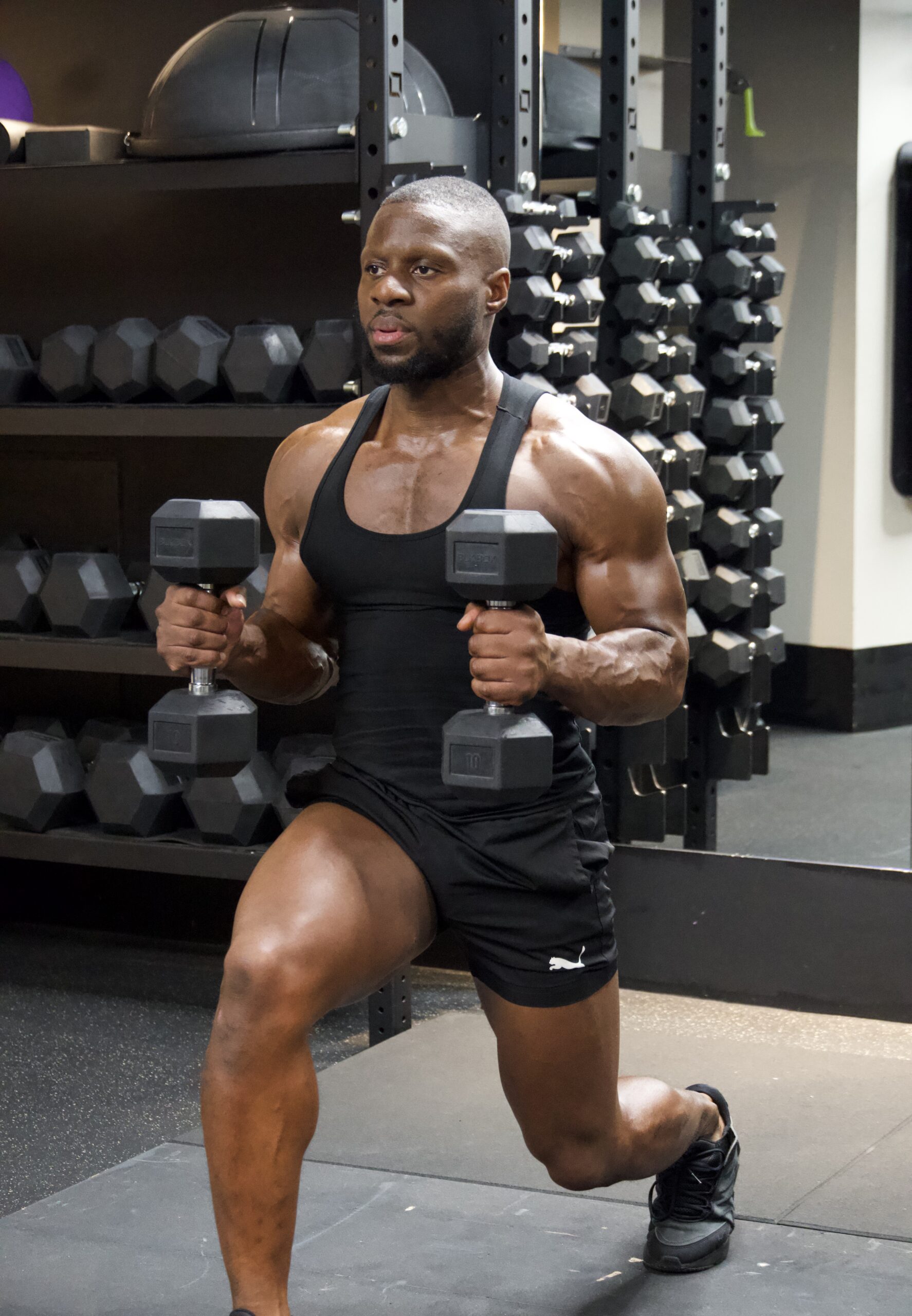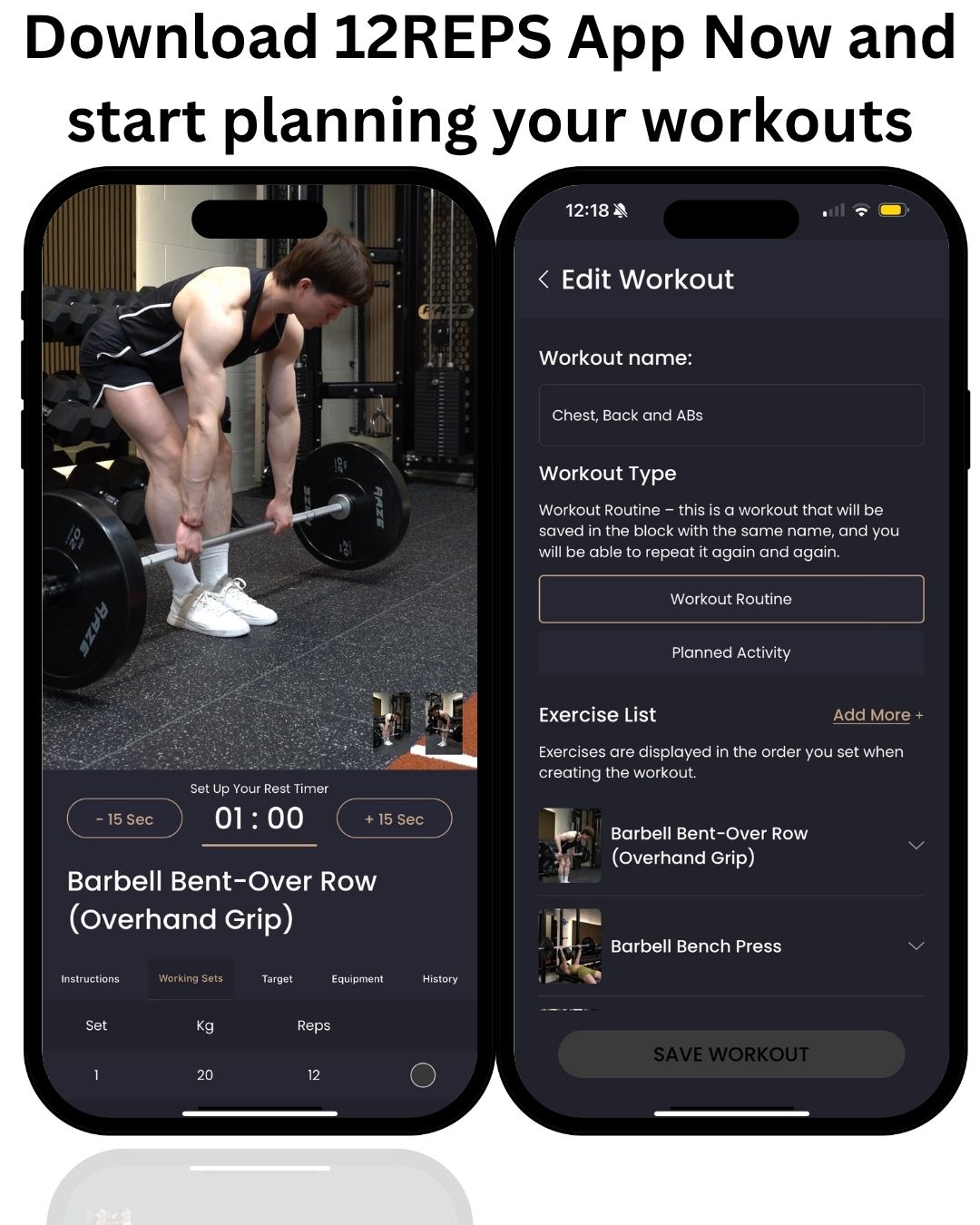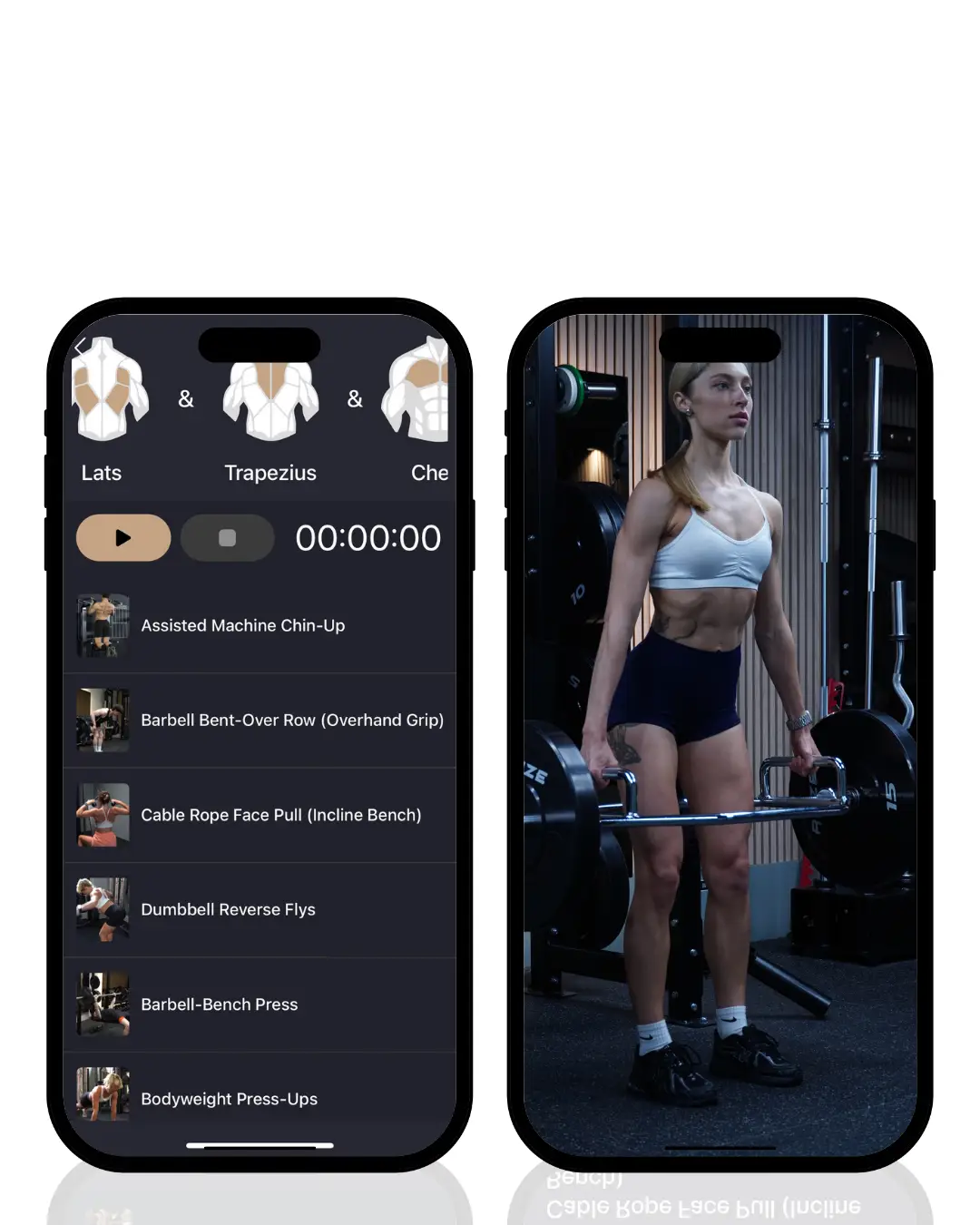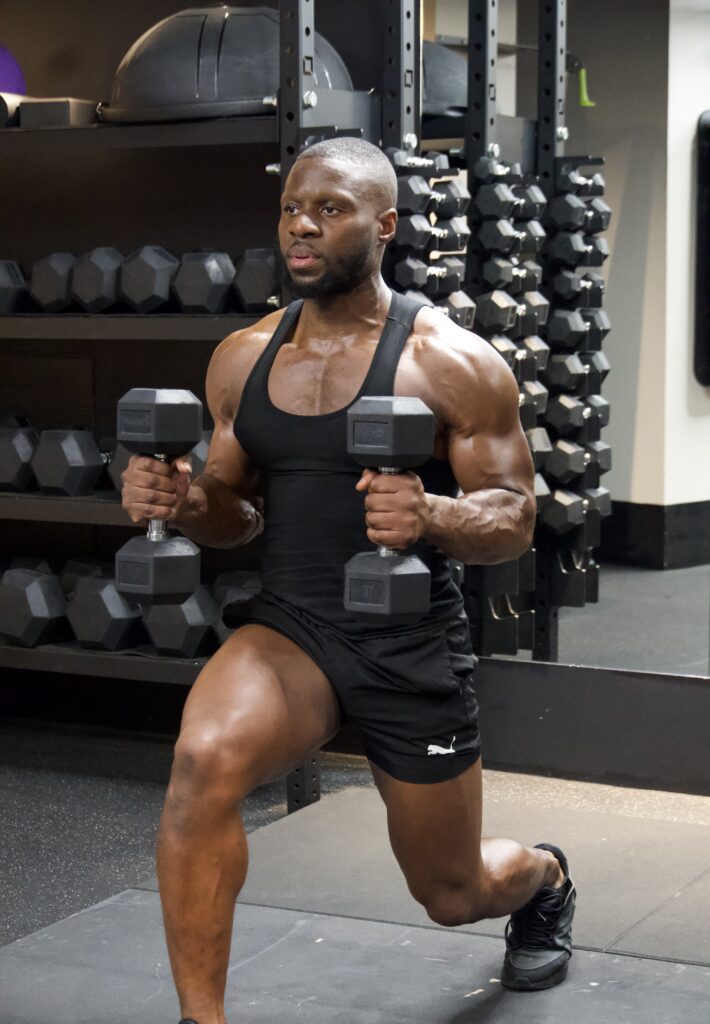By Will Duru, BSc (Hons) Sport and Exercise Science, Award-winning Personal Trainer with over 10 years of experience in strength training and optimising recovery
As a personal trainer in the heart of London for the past 10 years, I’ve had the privilege of helping countless men and women transform their bodies and their lives. I’m Will Duru, and my passion is to help people become strong and powerful, not just in the gym, but in every aspect of their lives. One of the most common questions I get is, “Should I train for strength or for size?” It’s a great question, and the answer depends entirely on your goals. Are you looking to lift the heaviest weights possible, or are you aiming for that classic, chiseled physique?
In this guide, we will dive deep into the world of strength and hypertrophy training. We’ll explore the science behind each, examine popular training methods such as the 5×5 program and bodybuilding splits, and help you determine which approach is right for you. And to make your journey even easier, I’ll show you how you can use the 12Reps app to track your progress and stay motivated, no matter which path you choose. So, let’s get started!
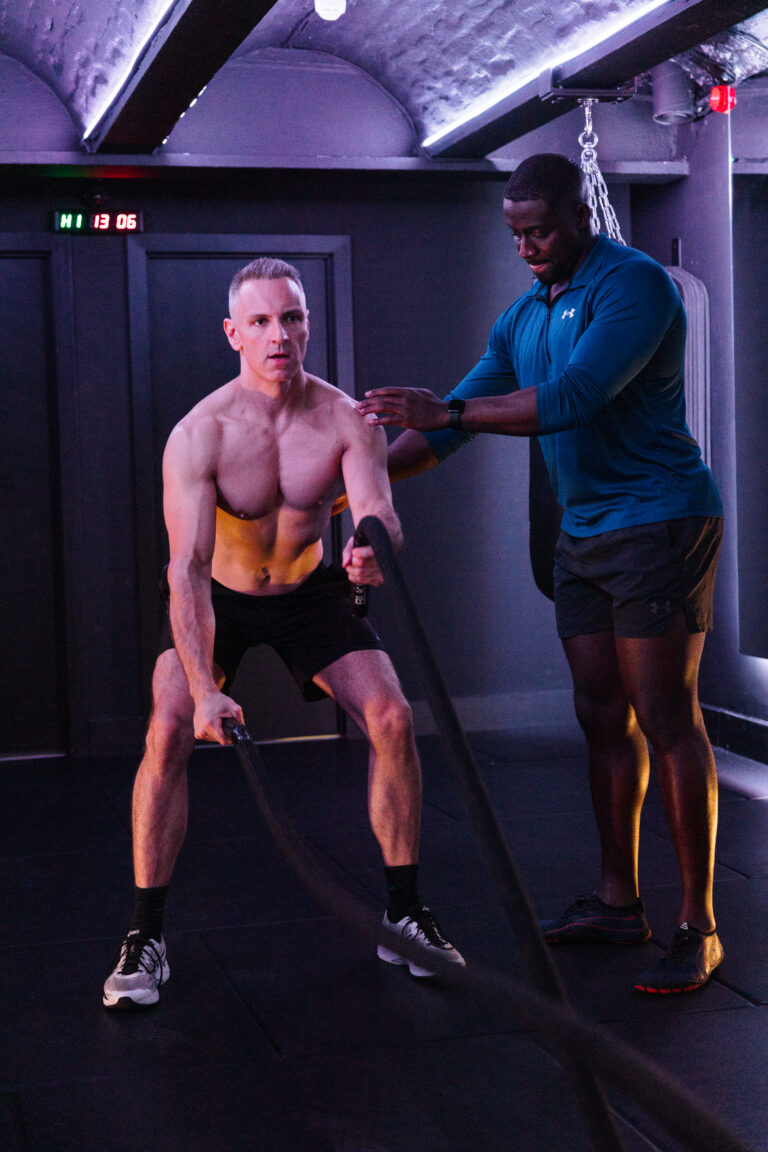
What is Strength Training? The Art of Getting Stronger
Core idea
Strength training increases your ability to produce force.
You teach muscles to work together to lift heavy.
You will build some muscle, but early gains are mostly neural.
Think software upgrade that helps you use your current hardware better.
The science of strength
Heavy, low-rep work sends a strong signal to your central nervous system.
Your CNS learns to recruit more motor units, fire them faster, and fire them together.
You can get much stronger without getting much bigger at first.
Research shows neural adaptations drive early strength gains.
Key neural adaptations
Motor unit recruitment
Heavier loads need more motor units.
Training teaches your brain to recruit more, so you produce more force.
Rate coding
Faster firing equals more force.
Training increases firing rate for better strength and power.
Intermuscular and intramuscular coordination
Better teamwork between muscles and within a muscle.
Movement becomes smoother and more powerful.
The 5×5 method
Simple and effective for strength.
Perform 5 sets of 5 reps on core compound lifts.
Add weight session to session.
Builds a solid base and suits beginners well.
Sample 5×5 plan
Workout A
Squat: 5×5
Bench Press: 5×5
Barbell Row: 5×5
Workout B
Squat: 5×5
Overhead Press: 5×5
Deadlift: 1×5
How to run it
Train three non-consecutive days per week.
Example: Monday, Wednesday, Friday.
Alternate A and B.
Add a small amount of weight to each lift every workout.
Linear progression drives strength adaptations.
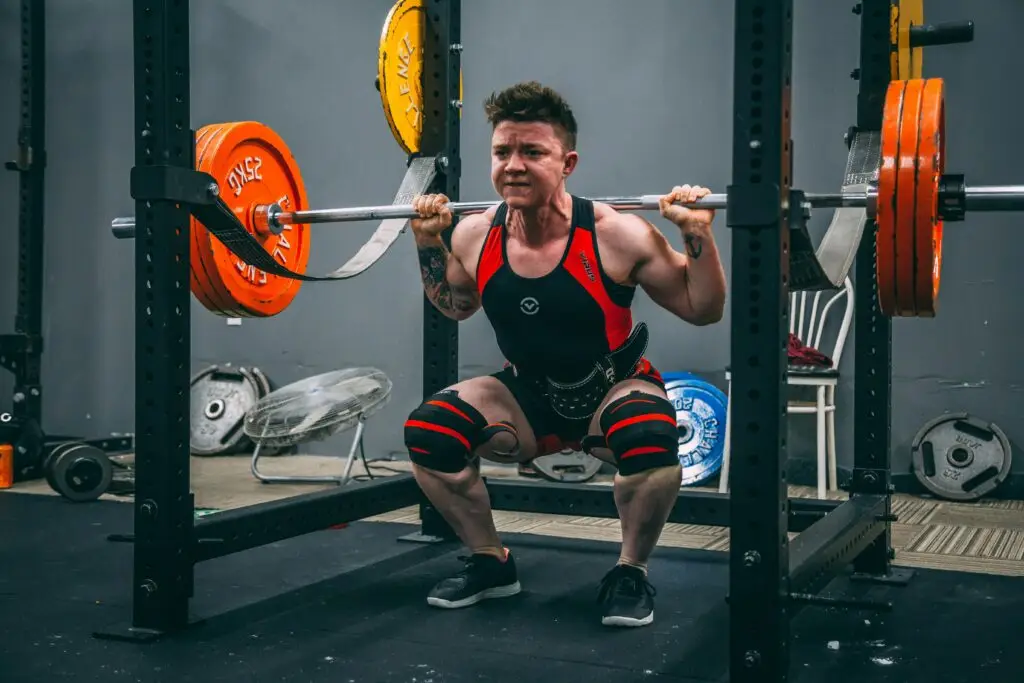
What is Hypertrophy Training? The Art of Building Muscle
Hypertrophy training, on the other hand, is all about increasing the size of your muscles. This is the type of training that bodybuilders use to sculpt their physiques. While strength is still a component, the primary goal is to stimulate muscle growth through a combination of mechanical tension, muscle damage, and metabolic stress.
The Science of Hypertrophy
To build muscle, you need to create a stimulus that tells your body it needs to adapt by growing bigger and stronger. This is achieved by lifting weights in a moderate rep range (typically 6-12 reps) with a focus on creating a “pump” and feeling the muscle work. This type of training causes microscopic tears in your muscle fibers (muscle damage) and a buildup of metabolic byproducts (metabolic stress), both of which signal your body to initiate the muscle repair and growth process. As Schoenfeld and colleagues have shown, training volume (the total amount of work you do) is a key driver of hypertrophy, and you can achieve similar muscle growth with a variety of loading schemes as long as you train with sufficient effort [2].
Let’s take a closer look at the three primary mechanisms of hypertrophy:
- Mechanical Tension: This is the force that is placed on your muscles when you lift weights. The heavier the weight, the greater the mechanical tension. This is why progressive overload is so important for muscle growth. You need to continually challenge your muscles with heavier weights or more reps to keep them growing.
- Muscle Damage: When you lift weights, you create microscopic tears in your muscle fibers. This damage triggers an inflammatory response, which in turn stimulates the release of growth factors that promote muscle repair and growth. This is why you often feel sore after a tough workout.
- Metabolic Stress: This refers to the buildup of metabolic byproducts, such as lactate and hydrogen ions, in your muscles during a set. This is what causes the “burning” sensation you feel when you’re pushing yourself hard. Metabolic stress has been shown to be a potent stimulus for muscle growth, likely due to its effects on cell swelling and hormone production [3].
Bodybuilding Training Methods
Bodybuilders often use a “split” routine, where they train different muscle groups on different days. This allows them to focus on each muscle group with a higher volume of exercises, sets, and reps, which is ideal for maximising hypertrophy. A typical bodybuilding split might look something like this:
- Day 1: Chest and Triceps
- Day 2: Back and Biceps
- Day 3: Legs and Shoulders
- Day 4: Rest
- Day 5: Repeat
Here is a sample bodybuilding workout for chest and triceps:
Chest
- Incline Dumbbell Press: 4 sets of 8-12 reps
- Flat Barbell Bench Press: 3 sets of 8-12 reps
- Dumbbell Flyes: 3 sets of 12-15 reps
- Cable Crossovers: 3 sets of 12-15 reps
Triceps
- Skull Crushers: 4 sets of 8-12 reps
- Tricep Pushdowns: 3 sets of 12-15 reps
- Overhead Dumbbell Extensions: 3 sets of 12-15 reps
This approach allows for a high degree of specialisation and is a great way to bring up lagging body parts.
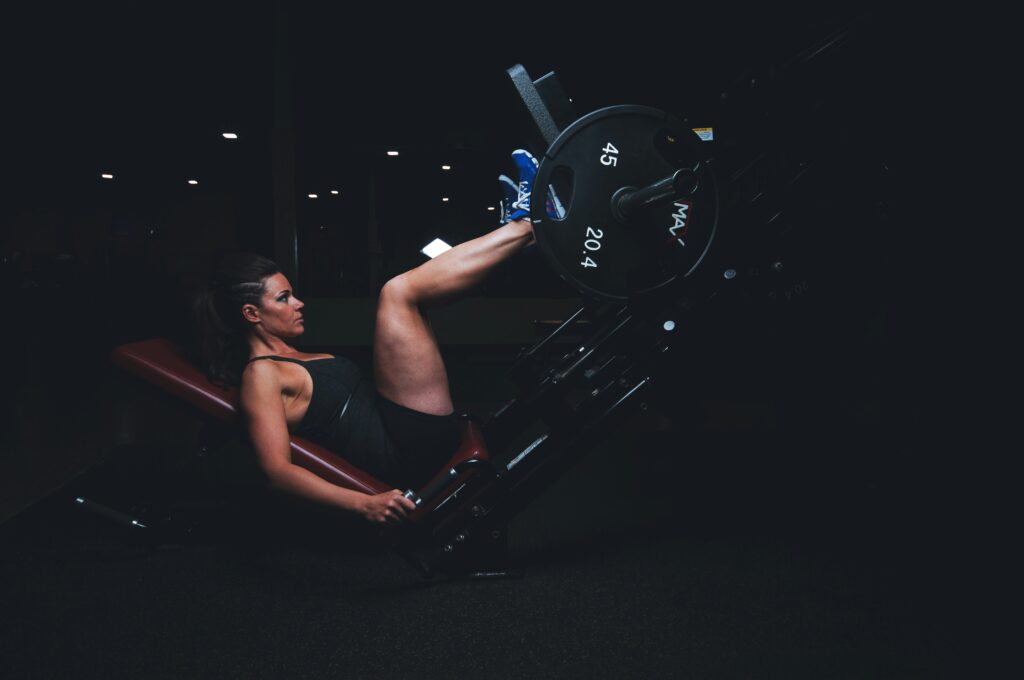
Strength vs. Hypertrophy: The Key Differences
So, what are the main differences between strength and hypertrophy training? Here’s a quick breakdown:
Feature | Strength Training | Hypertrophy Training |
Primary Goal | Increase maximal force production | Increase muscle size |
Rep Range | 1-5 reps | 6-12 reps |
Load | 85-100% of 1RM | 60-80% of 1RM |
Rest Periods | 3-5 minutes | 60-90 seconds |
Training Volume | Lower | Higher |
Primary Adaptation | Neural | Muscular |
It’s important to remember that these are not mutually exclusive. You will get stronger with hypertrophy training, and you will build muscle with strength training. However, by focusing on one style of training, you will optimise your results for that specific goal.
Powerbuilding: The Best of Both Worlds
But what if you want both? The good news is that you can have your cake and eat it too. A well-designed program can incorporate elements of both strength and hypertrophy training. For example, you could start your workouts with a heavy compound lift in the 3-5 rep range to focus on strength and then proceed to accessory exercises in the 8-12 rep range to target hypertrophy. This is a popular and effective approach known as “powerbuilding.”
Here is a sample powerbuilding weekly plan:
Day 1: Upper Body Strength
- Bench Press: 5 sets of 3-5 reps
- Incline Dumbbell Press: 4 sets of 8-12 reps
- Bent-Over Barbell Rows: 4 sets of 6-8 reps
- Lat Pulldowns: 3 sets of 10-12 reps
- Overhead Press: 3 sets of 6-8 reps
- Dumbbell Lateral Raises: 3 sets of 12-15 reps
Day 2: Lower Body Strength
- Squats: 5 sets of 3-5 reps
- Romanian Deadlifts: 4 sets of 8-12 reps
- Leg Press: 3 sets of 10-12 reps
- Leg Curls: 3 sets of 12-15 reps
- Calf Raises: 4 sets of 15-20 reps
Day 3: Rest
Day 4: Upper Body Hypertrophy
- Incline Bench Press: 4 sets of 10-12 reps
- Dumbbell Bench Press: 3 sets of 12-15 reps
- Cable Rows: 4 sets of 10-12 reps
- Dumbbell Rows: 3 sets of 12-15 reps
- Arnold Press: 3 sets of 10-12 reps
- Cable Lateral Raises: 3 sets of 15-20 reps
Day 5: Lower Body Hypertrophy
- Front Squats: 4 sets of 10-12 reps
- Lunges: 3 sets of 12-15 reps per leg
- Leg Extensions: 3 sets of 15-20 reps
- Seated Leg Curls: 3 sets of 15-20 reps
- Seated Calf Raises: 4 sets of 20-25 reps
This is just a sample, and you can adjust it to fit your individual needs and preferences. The key is to include both heavy, low-rep work for strength and lighter, high-rep work for hypertrophy.

Nutrition for Strength and Hypertrophy
No matter how hard you train, you won’t see the results you want without proper nutrition. Your diet provides the fuel for your workouts and the building blocks for muscle growth and repair.
Caloric Intake
To build muscle, you need to be in a caloric surplus, meaning you’re consuming more calories than you’re burning. A good starting point is to eat around 250-500 calories above your maintenance level. This will provide your body with the energy it needs to build new muscle tissue without accumulating excessive body fat.
Macronutrients
Your macronutrient intake is also crucial for optimising your results.
- Protein: Protein is the most important macronutrient for muscle growth. It provides the amino acids that are the building blocks of muscle tissue. Aim for 1.6-2.2 grams of protein per kilogram of body weight per day.
- Carbohydrates: Carbohydrates are your body’s primary source of energy. They fuel your workouts and replenish your glycogen stores after training. Aim for 3-5 grams of carbohydrates per kilogram of body weight per day.
- Fats: Fats are essential for hormone production and overall health. They also provide a concentrated source of energy. Aim for 0.5-1.5 grams of fat per kilogram of body weight per day.
Nutrient Timing
While your total daily intake of calories and macronutrients is the most important factor, nutrient timing can also play a role in optimising your results. Consuming a meal or shake containing both protein and carbohydrates within a few hours of your workout can help to kick-start the muscle repair and growth process.
Recovery: The Missing Piece of the Puzzle
You don’t build muscle in the gym; you build it when you’re resting and recovering. If you’re not giving your body enough time to recover between workouts, you’re not going to see the results you want.
Sleep
Sleep is when your body does most of its repairing and rebuilding. When you’re sleep-deprived, your body produces more of the stress hormone cortisol and less of the muscle-building hormones testosterone and growth hormone. Aim for 7-9 hours of quality sleep per night.
Active Recovery
Active recovery, such as light cardio, stretching, or foam rolling, can help to reduce muscle soreness and improve blood flow to your muscles, which can speed up the recovery process. Incorporate some form of active recovery into your routine on your rest days.
Stress Management
Chronic stress can have a negative impact on your ability to build muscle and recover from your workouts. Find healthy ways to manage your stress, such as meditation, yoga, or spending time in nature.
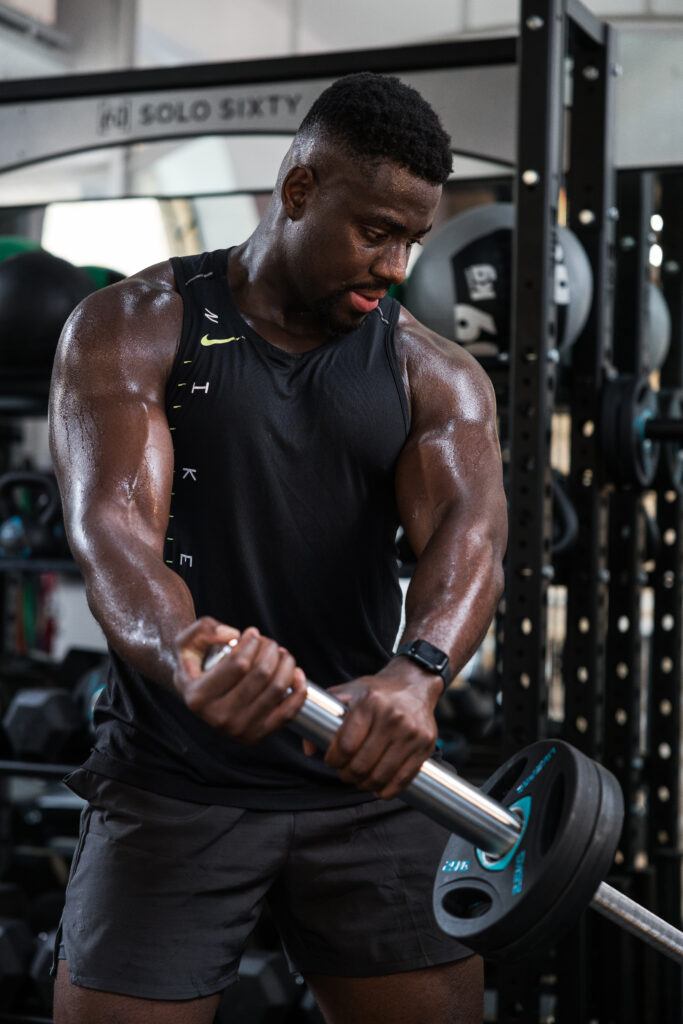
Supplements for Strength and Hypertrophy
While supplements are not a magic bullet, they can help to give you an extra edge in your training. Here are a few of the most effective supplements for strength and hypertrophy:
- Creatine: Creatine is one of the most well-researched and effective supplements for increasing strength, power, and muscle mass. It works by increasing the amount of ATP (your body’s main source of energy) available to your muscles.
- Protein Powder: Protein powder is a convenient and effective way to increase your daily protein intake. Whey protein is a popular choice because it’s a complete protein that is quickly absorbed by the body.
- Pre-Workouts: Pre-workout supplements can help to improve your energy, focus, and performance in the gym. They typically contain ingredients like caffeine, beta-alanine, and citrulline malate.
What the Reddit Community Says
When it comes to workout advice, the Reddit community is a goldmine of information. I’ve spent countless hours on subreddits like r/Fitness, r/bodybuilding, and r/powerlifting, and I’ve learned a lot from the collective wisdom of the community. Here are a few key takeaways:
- Beginners should focus on strength: The general consensus on Reddit is that beginners should start with a strength-focused program like the 5×5. This will help you build a solid foundation of strength and learn the proper form for the main compound lifts.
- Don’t be afraid to experiment: Once you have a few months of consistent training under your belt, don’t be afraid to experiment with different programs and training styles. What works for one person may not work for another, so it’s important to find what you enjoy and what gives you the best results.
- Consistency is key: This is probably the most important piece of advice you’ll find on Reddit, and it’s something I preach to all of my clients. It doesn’t matter what program you’re on if you’re not consistent with your training and nutrition. Show up, do the work, and be patient. The results will come.
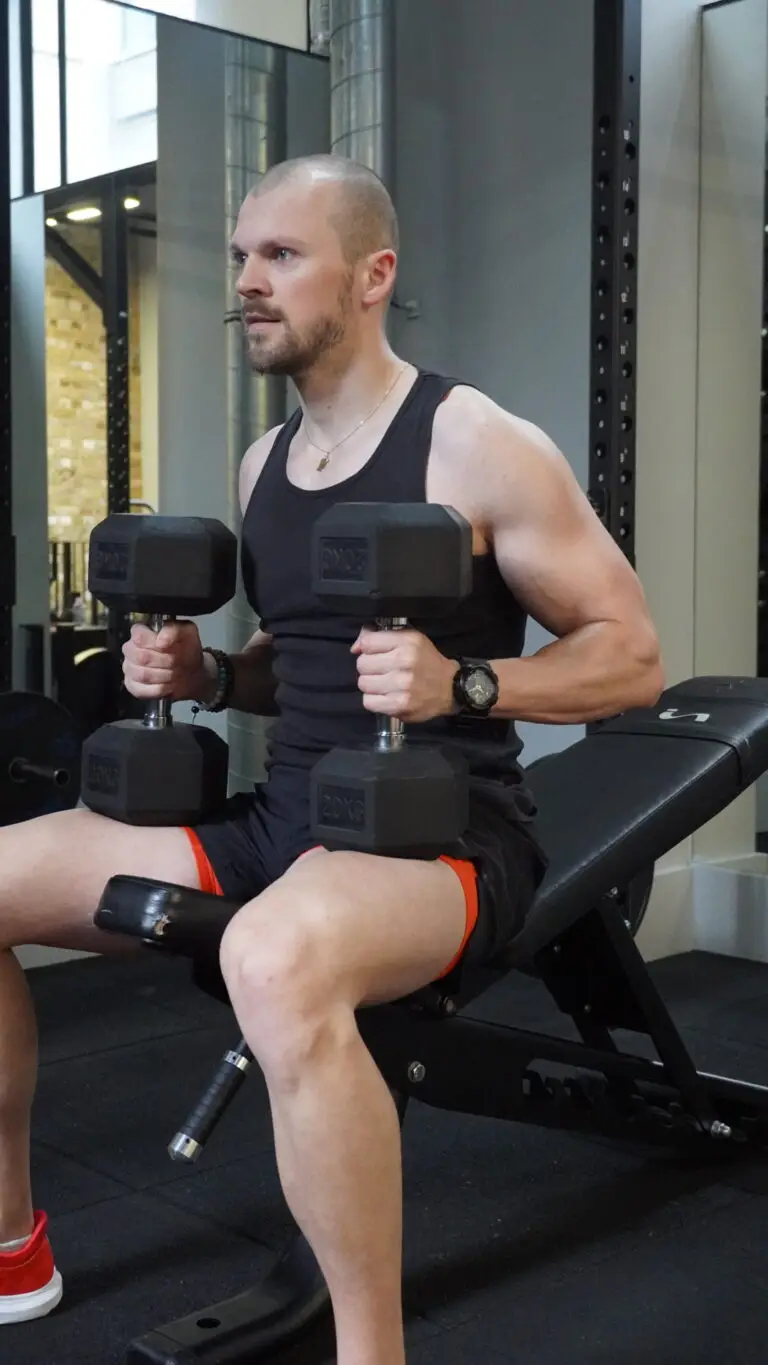
Track Your Progress with the 12Reps App
Regardless of the training style you choose, tracking your progress is crucial for achieving long-term success. This is where the 12Reps app comes in. As a strength training app and workout tracker, it’s the perfect tool to help you stay on track and reach your goals. You can use it to:
- Log your workouts: Keep a detailed record of your exercises, sets, reps, and weights.
- Track your progress: See how your strength and muscle size are improving over time.
- Stay motivated: Set goals, earn badges, and connect with a community of like-minded lifters.
Ready to start your journey? Download the 12Reps app for free and get a 7-day free trial to unlock all the premium features.
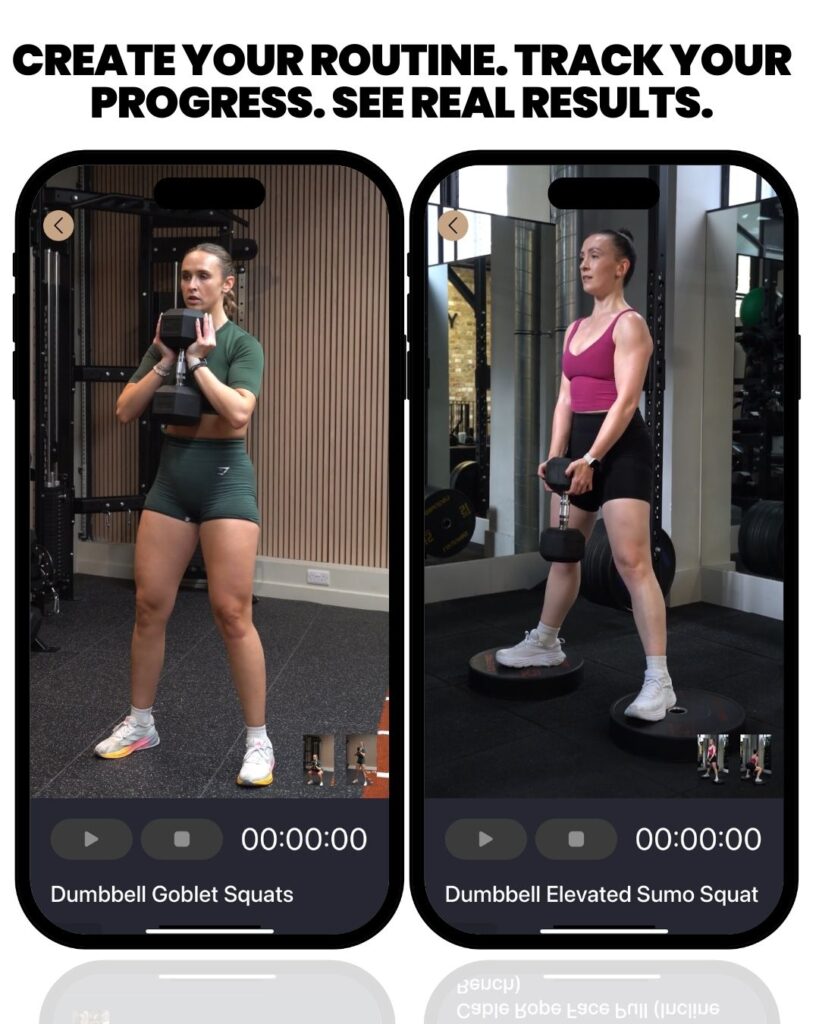
The Final Word
Strength and hypertrophy training are two sides of the same coin. While they have different primary goals, they are both incredibly effective ways to improve your health, fitness, and overall quality of life. By understanding the key differences between the two and choosing the right approach for your goals, you can build the body you’ve always wanted. So, get out there, lift some weights, and become the strongest, most powerful version of yourself.
References
- Reggiani, C., & Schiaffino, S. (2020). Muscle hypertrophy and muscle strength: dependent or independent variables? A provocative review. European Journal of Translational Myology, 30(3). https://www.ncbi.nlm.nih.gov/pmc/articles/PMC7582410/
- Schoenfeld, B. J., Grgic, J., Van Every, D. W., & Plotkin, D. L. (2021). Loading recommendations for muscle strength, hypertrophy, and local endurance: A re-examination of the repetition continuum. Sports, 9(2), 32. https://www.ncbi.nlm.nih.gov/pmc/articles/PMC7927075/
- Krzysztofik, M., Wilk, M., Wojdała, G., & Gołaś, A. (2019). Maximizing muscle hypertrophy: a systematic review of advanced resistance training techniques and methods. International journal of environmental research and public health, 16(24), 4897. https://www.ncbi.nlm.nih.gov/pmc/articles/PMC6950543/
- Alves, R. C., Prestes, J., Enes, A., de Moraes, W. M. A., Trindade, T. B., de Salles, B. F., & Aragon, A. A. (2020). Training programs designed for muscle hypertrophy in bodybuilders: a narrative review. Sports, 8(11), 149. https://www.mdpi.com/2075-4663/8/11/149

